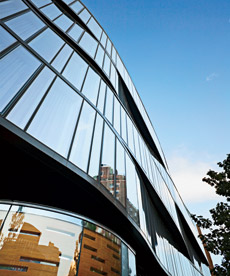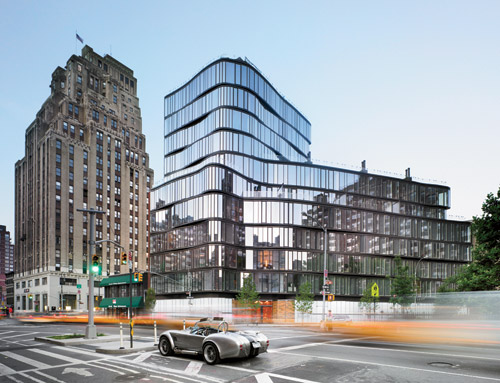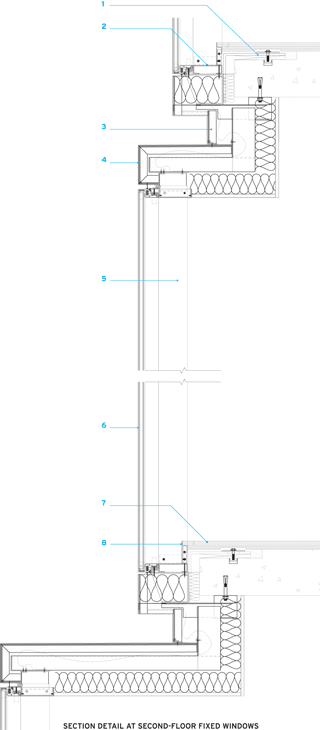Behind the Curtain Wall
 |
Â
 |
Window dimensions vary, as do the curving ribbons of each floor. Photo: © Michael Moran |
Convincing the New York City Landmarks Preservation Commission, as well as the building's neighbors, that a glass wall was the way to go in the historic district presented challenges, but once approved, the real challenge came in building the structure.
Since construction of the building was scheduled to proceed during the height of New York's building boom, it was nearly impossible to get a large curtain-wall company to take interest in such a relatively small project. Curtain-wall consultant Gilsanz Murray Steficek came up with a concept that would allow the unique wall to be built as a stick system, which meant that much of its assembly would take place on-site. The job of putting it together went to contractors whose experience lay mainly in fabricating storefronts, not luxury apartment buildings.
The metal contractors anchored 18-foot-long horizontal sections, bent according to information provided by 3D computer models, to the floor slabs. As with Beekman Tower, it was critical that the concrete slab edges were formed precisely so that the mullion joints would align and the system would be plumb both vertically and horizontally. In a couple of the units containing double-height spaces, a large beam replaces the slab edge.
Another thing One Jackson Square had in common with Beekman Tower was the constantly changing unit mix. (The finished building contains 32 units, with retail expected on the ground floor). The undulating wall proved perfect for providing the needed flexibility. KPF developed a scheme that had four panel types and one variant. Wherever a partition ended up, a vertical mullion could be added at that point in space. The contractors installed the vertical mullions within the horizontal sections on-site. The framed windows, containing low-iron, reflective glass, were then added.
 |
One Jackson Square's glass exterior becomes a constantly changing image of what is surrounding the building. Photo: © Raimund Koch |
 |
||
|









